How coverage gaps are undermining housing efforts
Rising premiums add new strain to homelessness response

As homelessness in the United States continues to climb, the lack of affordable housing remains a key factor. While funding and zoning issues often dominate the conversation, non-profit housing providers are increasingly encountering another pressing challenge: rising insurance costs and limited coverage options.
Kristina Dorer, assistant vice president of property and casualty at Woodruff Sawyer, has seen firsthand how the insurance environment has shifted. She says the market for insuring low-income housing has grown more restrictive as carriers respond to repeated losses and legal exposures.
“The insurance market for low-income housing has hardened as carriers tighten coverage due to significant losses,” Dorer said. “Insurance carriers have limited their appetite on many lines of coverage for low-income housing due to reasons like tenant issues, quality of housing (such as mold concerns), litigation, and state consumer protection laws.”
Premium hikes are widespread and not limited to properties with claims history. Dorer pointed out that even loss-free buildings are seeing steep increases.
“For properties with no losses, premiums have increased by 30%-40% (or even more in many cases), and deductibles are much higher,” she said. “For example, we have seen water damage deductibles increase from $10,000 to $100,000.”
At the same time, the availability of coverage is shrinking. According to Dorer, some insurers are exiting the low-income housing segment entirely, leaving fewer choices for nonprofits operating on already tight budgets.
These market dynamics are forcing non-profit housing providers into difficult financial decisions. Dorer said that organizations are often stuck between two costly options when faced with a potential claim: “File a claim, risking premium hikes and renewal issues – or pay out of pocket, further impacting their budgets.”
The effect of these insurance costs extends beyond spreadsheets. For nonprofits, insurance premium increases often translate into service reductions.
“Nonprofits cannot increase their prices like for-profit businesses to cover added costs,” Dorer said. “A 50% insurance premium increase at renewal often means that much less is available for services to those in need.”
Risk reduction for nonprofits
While these challenges persist, Dorer emphasized that nonprofits can take risk-reduction measures that not only prevent losses but also support better outcomes with insurers. She pointed to fire safety equipment as one area where small steps can make a difference.
“We recommend the addition of fire blankets,” she said. “Clean-up is costly when a fire extinguisher is used. If the fire is small, a fire blanket is a great option. Consider providing one for each unit.”
Technology also plays a role in managing building conditions. Humidity sensors, Dorer said, can reduce long-term maintenance risks and help monitor indoor environments.
“Humidity sensors measure the amount of moisture in the air within a building to optimize energy efficiency and prevent issues like mold growth or other damage due to excessive moisture,” she said. “Some insurance carriers have sensor programs you can enroll in.”
Kitchen fire suppression tools are another risk-control option. “Stovetop FireStops help put out dangerous and destructive kitchen fires,” Dorer said.
Basic building maintenance tracking can also influence loss outcomes and insurability. Dorer saidproperty owners should have reliable records of major repairs and upgrades.
“Many building owners are unaware of when the roof was last replaced or when plumbing was updated in each building,” she said. “Keeping updated records of improvements helps managers schedule maintenance and replacement of key systems when needed to avoid major losses.”
In addition to physical risk mitigation, tenant relations also affect a non-profit’s exposure. According to Dorer, lack of access to individual units during emergencies or maintenance checks can worsen damage.
“Some tenants may not allow building management into their units when there could be a potential loss,” she said. “Unfortunately, this can lead to heavier losses. When a water loss is stopped immediately, the cost of damages and the number of units impacted are usually lower.”
Dorer said that building trust with tenants is critical for timely access. “Many nonprofits emphasize maintaining positive relationships between building management and tenants,” she said. “This leads tenants to have a level of trust to allow unit access when needed.”
Meeting underlying challenges in low-income housing
Despite these steps, Dorer believes broader policy interventions are needed. While some state-level studies have examined the insurance difficulties in this space, she said little has been done to address the underlying challenges.
“Many states have conducted independent studies on the insurance crisis affecting low-income housing, yet little action has been taken.”
She suggested exploring public support structures to help bridge the insurance affordability gap. “Could grants be established to contribute to the cost of insurance, or alternate insurance programs with rates that are sustainable for non-profit budgets?” Dorer said. “Thinking outside of the box will be essential in providing long-term solutions for the hard insurance market’s impact on nonprofits.”
Dorer noted the role of commercial brokers now includes both advising clients and advocating for systemic change. “As commercial insurance brokers specializing in nonprofits, we are committed to advocating for affordable insurance solutions to ensure low-income housing remains viable.”
What are your thoughts on this story? Please feel free to share your comments below.


